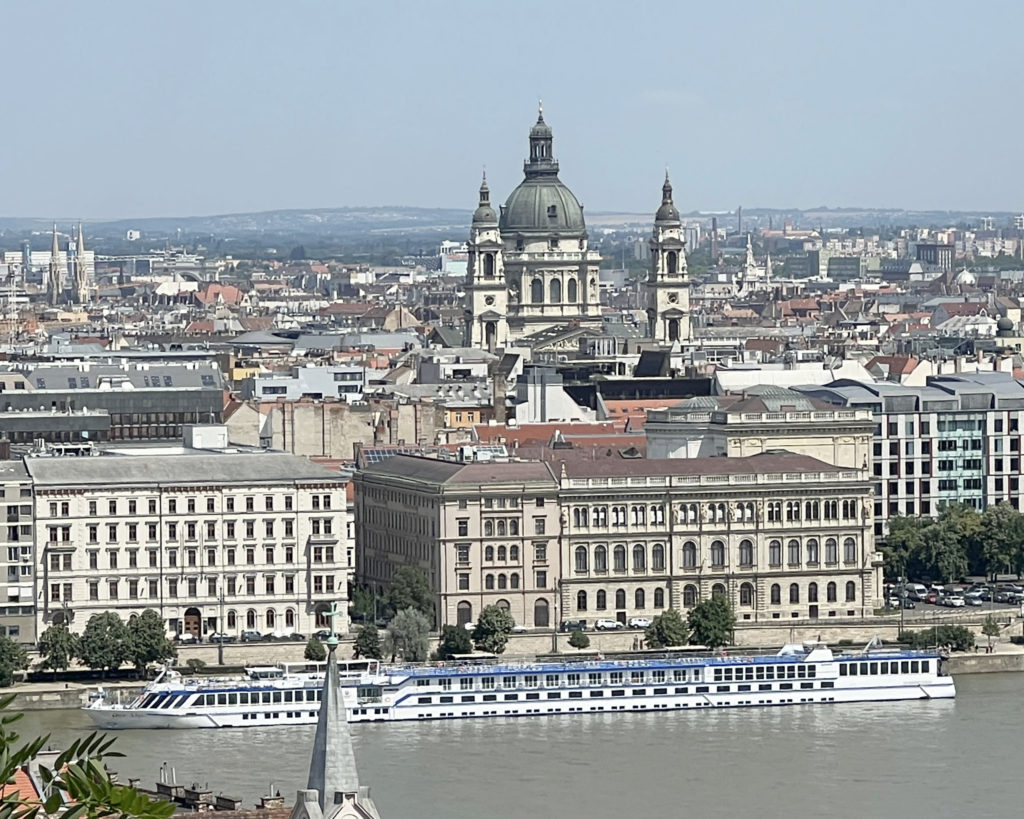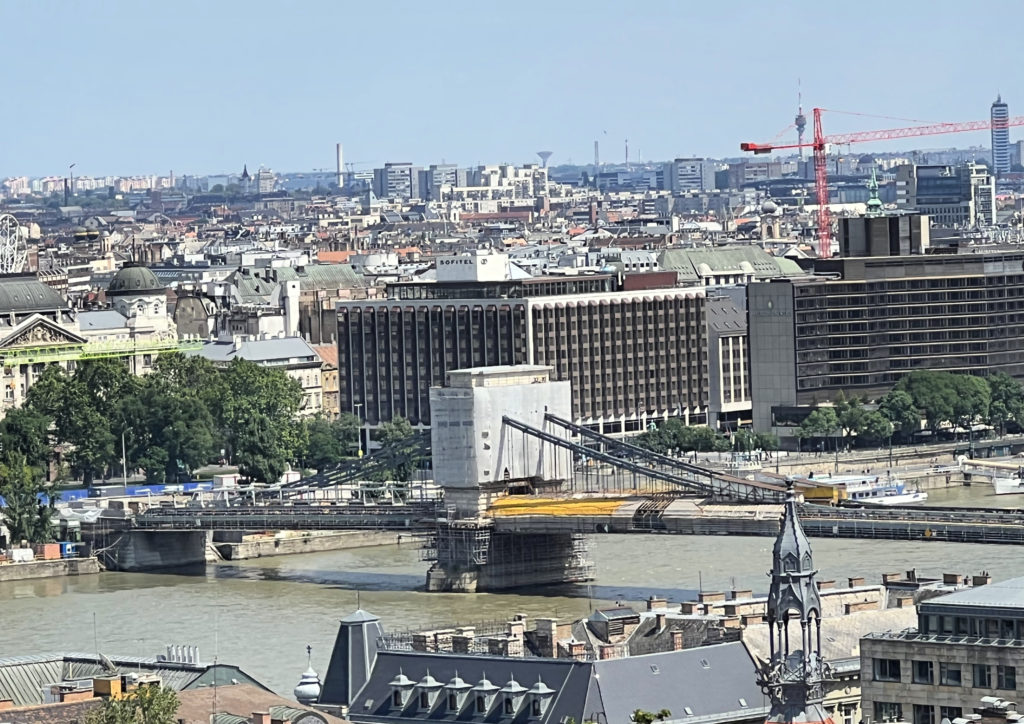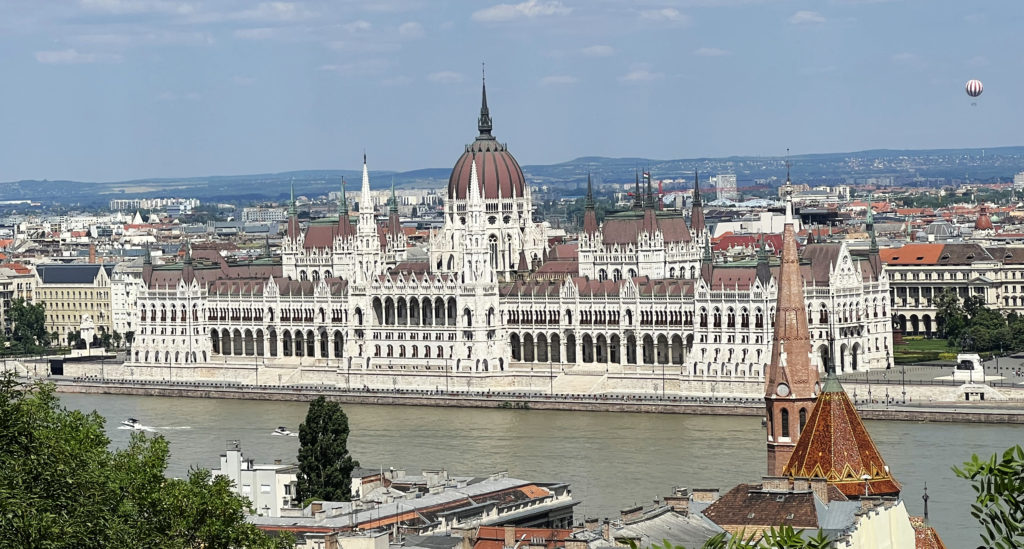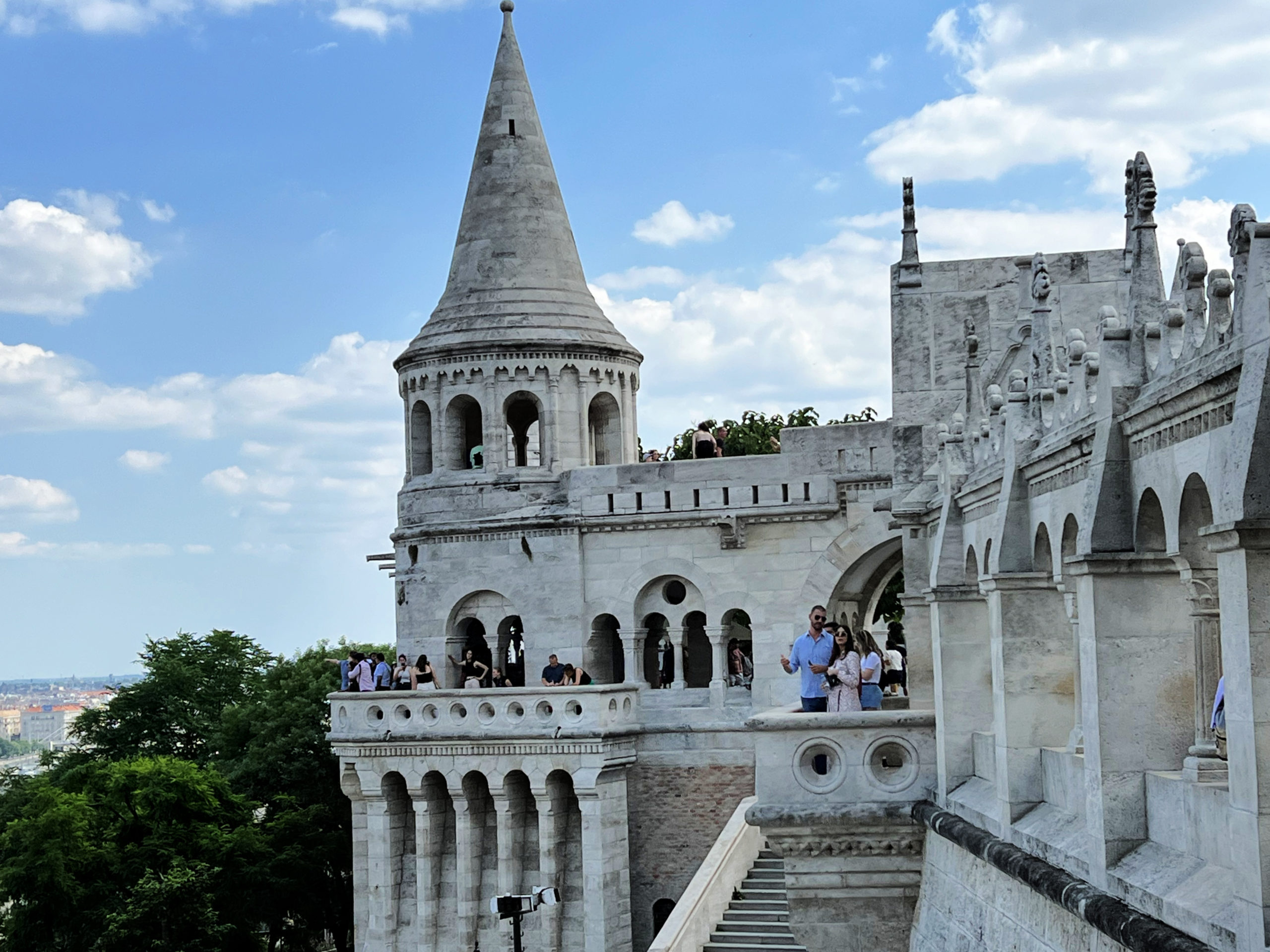
Matthias Church and Fisherman’s Bastion
We spent most of our time in Budapest on the Pest side but took a taxi to the Buda side to see Matthias Church and the Fisherman’s Bastion. Matthias Church, officially known as the Church of Our Lady or the Church of the Assumption of the Buda Castle, is a Roman Catholic church located in the Holy Trinity Square in front of the Fisherman’s Bastion. The church was originally built in 1255. It has been called Matthias Church (referring to King Matthias Corvinus) since the 19th century.
The church went through many renovations, additions and changes over the years. In 1541 the church was turned into a mosque when the Turks occupied Budapest. When Buda Castle was being attacked, a statue of the Virgin Mary was walled off so the the attackers wouldn’t find it. Many of the church’s other treasures and frescoes were removed or destroyed. But there is an interesting story about the recapture of Buda known as the “Mary-wonder.”
In 1686 during the siege of Buda city by the Holy League a wall of the church collapsed due to cannon fire. It turned out that an old votive Madonna statue was hidden behind the wall. As the sculpture of the Virgin Mary appeared before the praying Muslims, the morale of the Muslim garrison collapsed and the city fell on the same day.
https://placeandsee.com/wiki/matthias-church
When the Turks were expelled in 1686, restoration began but major changes weren’t seen until 1874 when Frigyes Schulek directed the project. He redesigned the church and restored much of the church’s beauty. Most of the exterior is typical of Gothic churches, with a rose window over the entrance and a bell tower 250 feet high. But the colorful roof tiles are unique. Matthias Church is a UNESCO World Heritage Site.
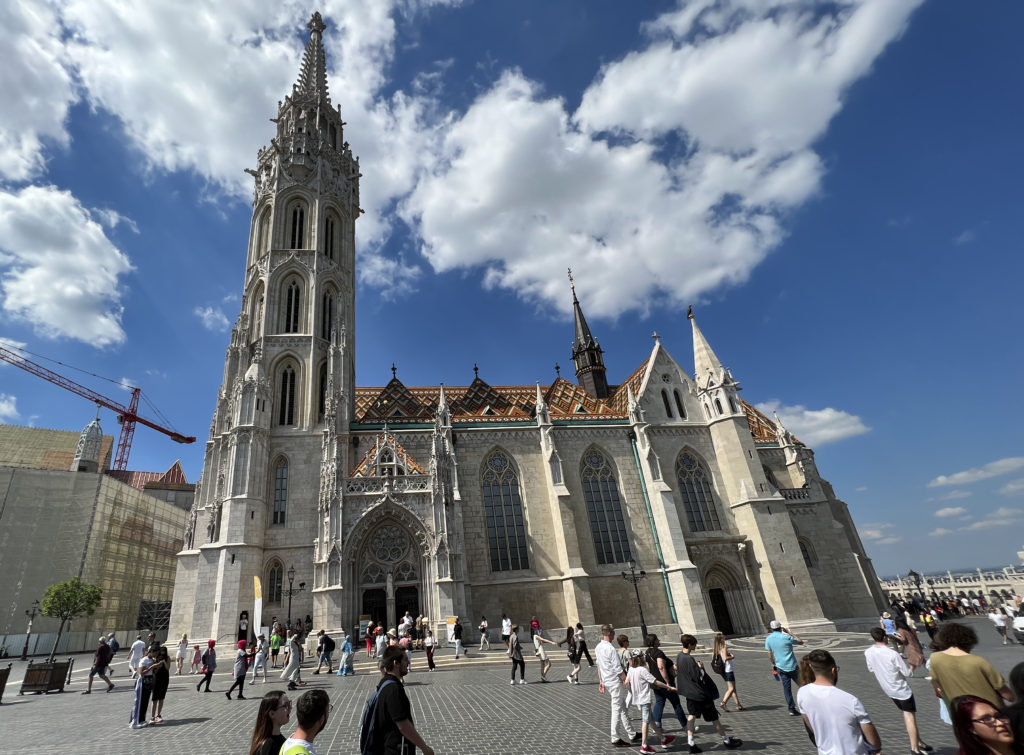

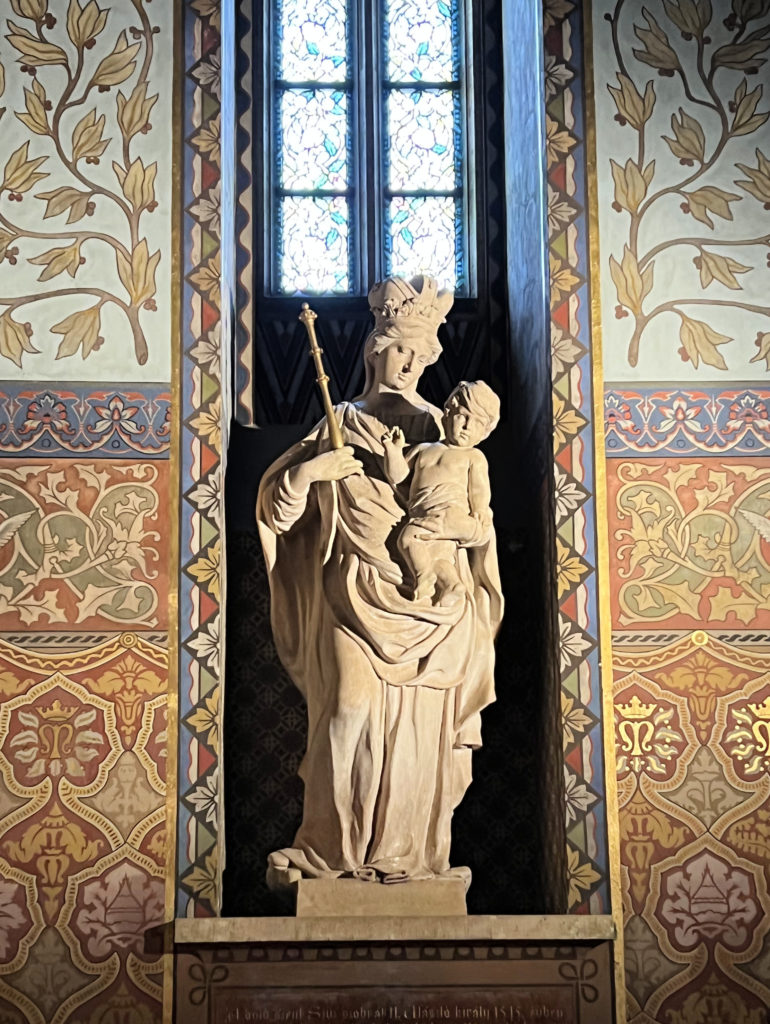
Below is the interior of the church, the sanctuary, the ceiling and the altar. The color pattern in the church is different than many churches with orange, brown, and golden frescos from floor to ceiling. The Virgin Mary is at the center of the altar. The tabernacle is beneath her.
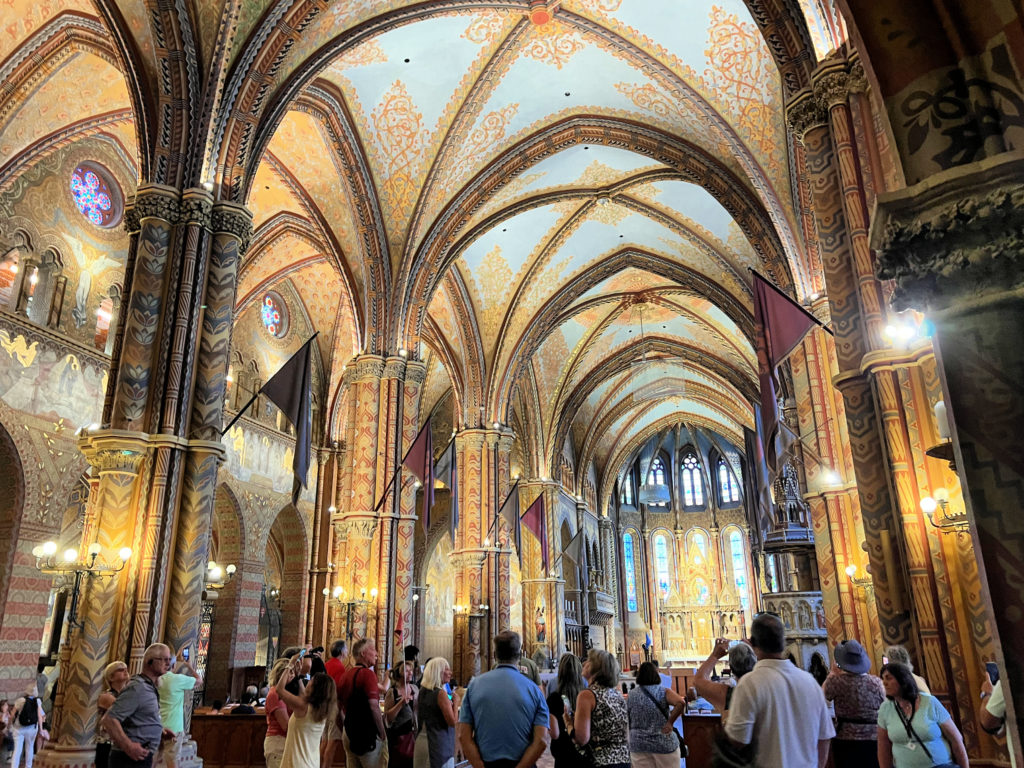
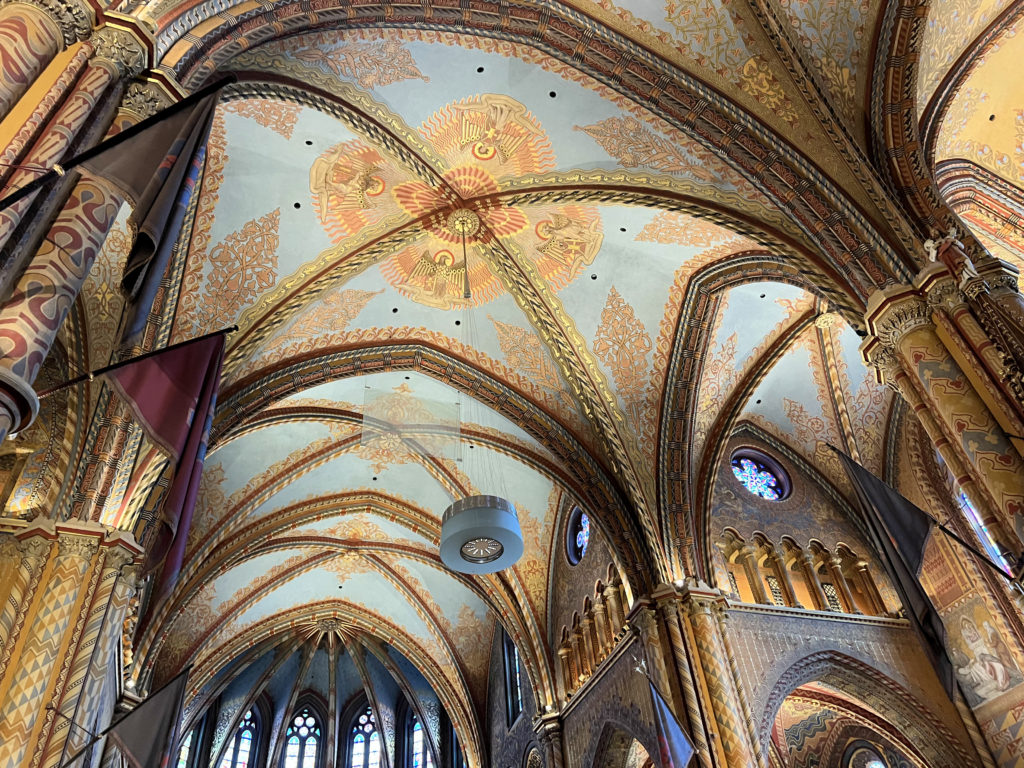

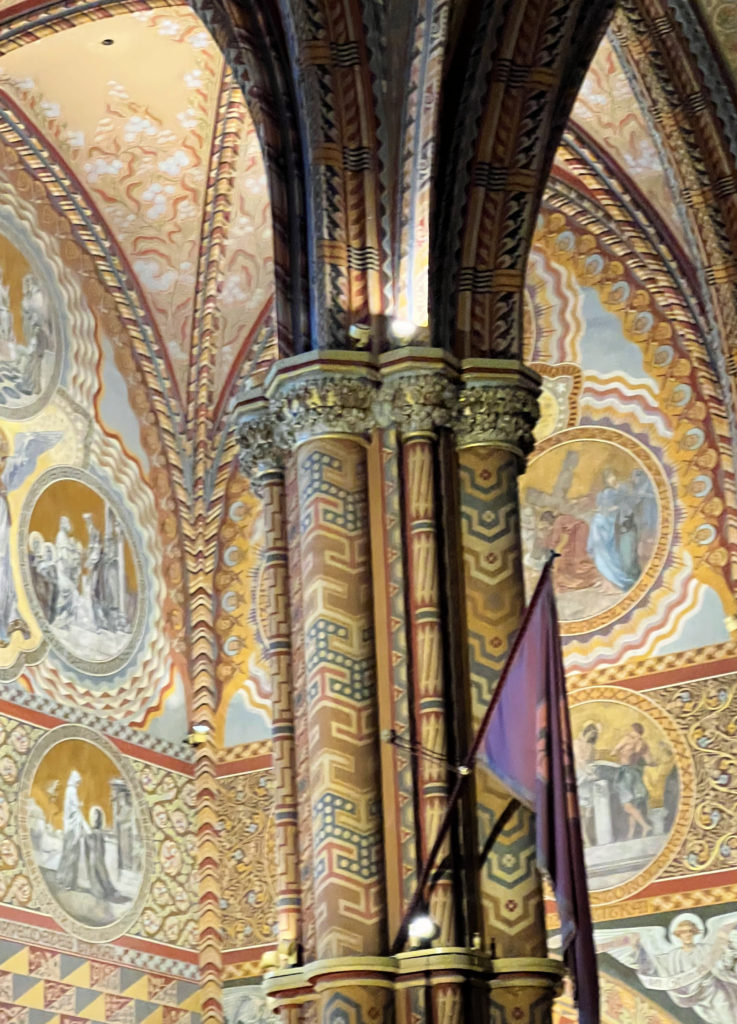
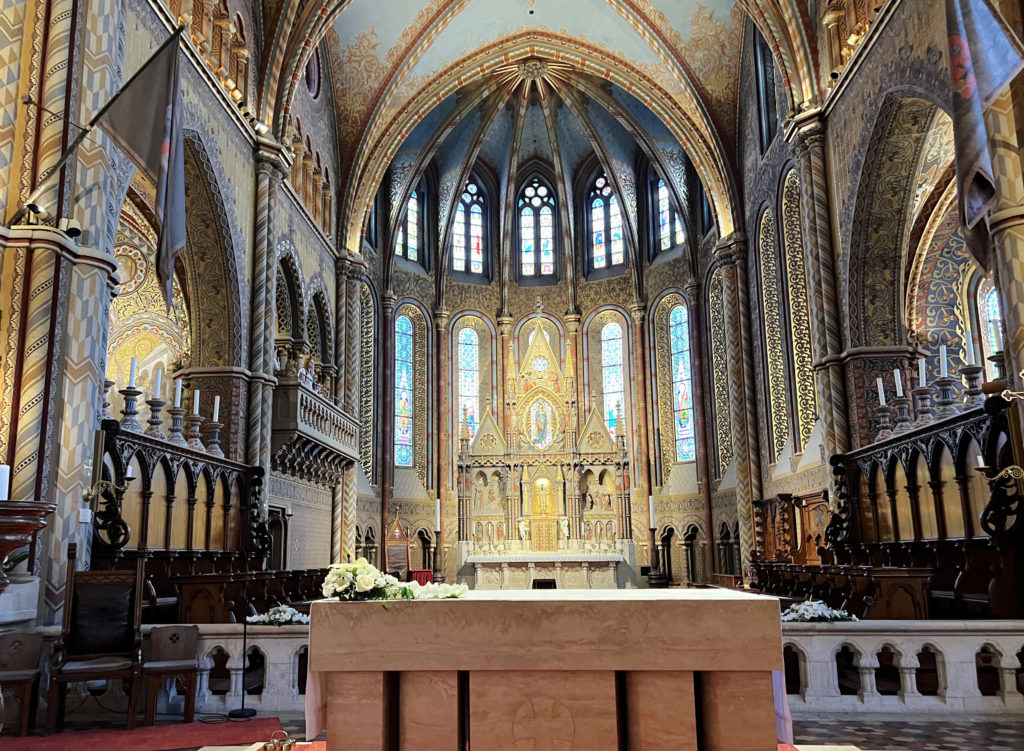
The church is beautiful with artwork almost everywhere. Inside the entrance of the church is King Matthias’ coat of arms. The raven in the center of the shield is the symbol of King Matthias. The Loretto Chapel is beneath the southern bell tower. Within this Chapel is a Black Madonna statue from the 17th Century. Many of the frescoes in the church tell stories. The third picture is an angel fresco.
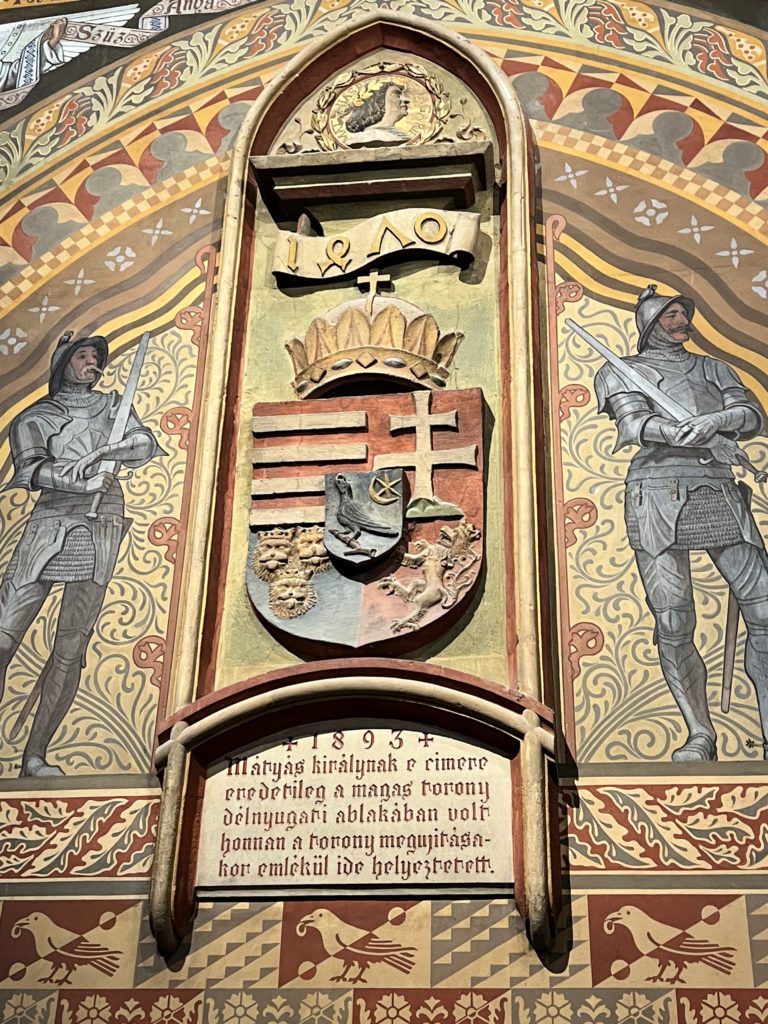
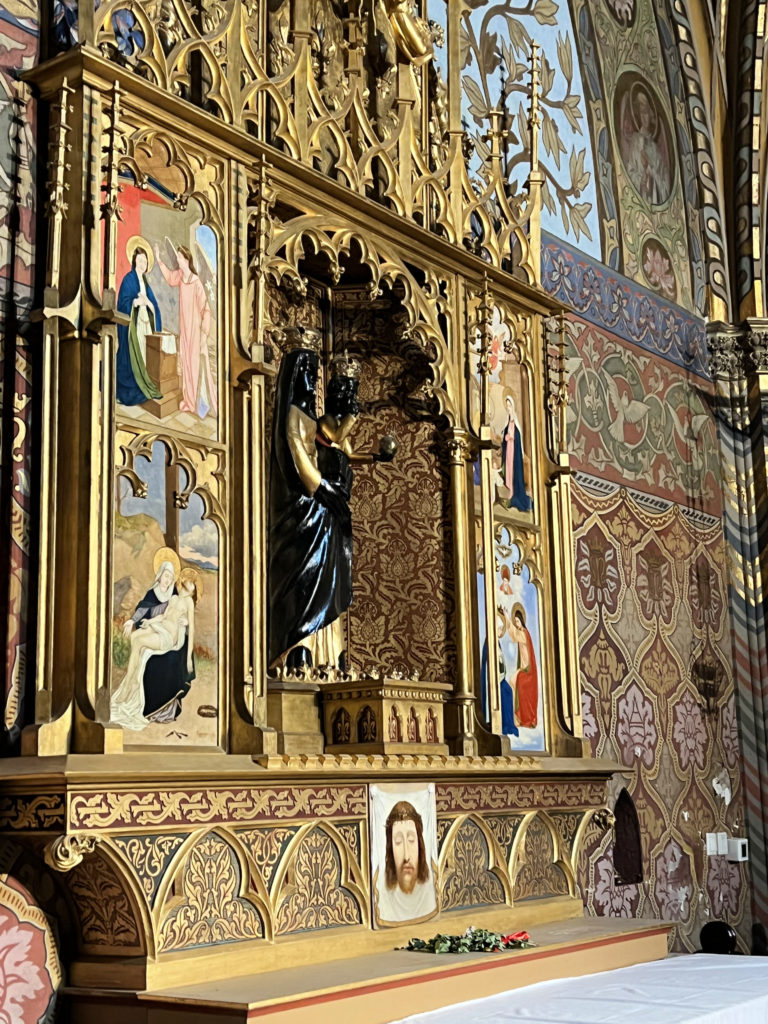
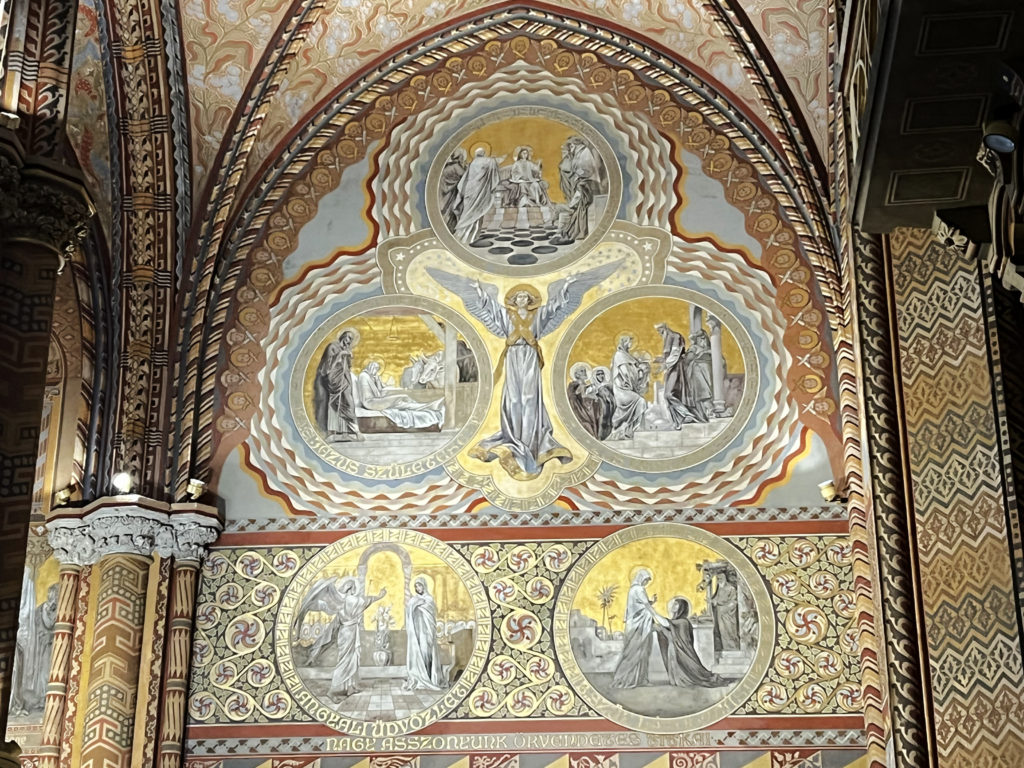
The Holy Trinity Column is in the center of Holy Trinity Square and adjacent to Matthias Church. The column was planned at the time the plague was causing deaths across Europe. Many people believed erecting the tower would end the plague. The column was finished in 1706 but the plague returned three years later. So a larger column was planned in an effort to keep the plague away. Many believed building this more impressive column was successful because the plague did not return after 1709. Today the column commemorates those in Buda who died of the plague. The figures of the Holy Trinity are at the top of the column. Beneath them are statues of angels, cherubs and saints.
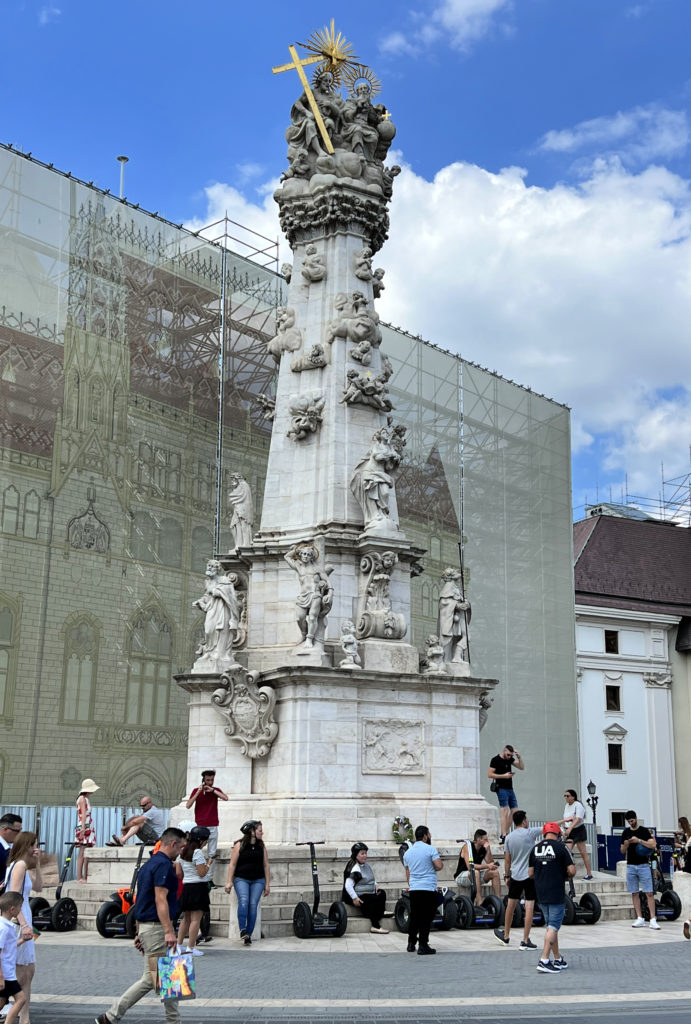

This is the Fisherman’s Bastion. It was built between 1895 and 1902 to commemorate the 1000th anniversary of Hungary’s founding. Fisherman’s Bastion provides panoramic views of the Pest side of Budapest. It was designed by Frigyes Schulek who also led the restoration of Matthias Church.
During medieval times, there was an actual castle on this site with thick fortification walls. It was protected by castle guards. Historians believe that this section of the wall was also protected by the guild of fishermen who lived in the small town of Fishtown between the castle walls and the Danube – thus the name, Fisherman’s Bastion.
On these pages there are pictures of the Bastion’s towers and arched windows overlooking the Danube. Both provided opportunities for great photographs. Also pictured is a statue of St. Stephen I adjacent to the Fisherman’s Bastion.
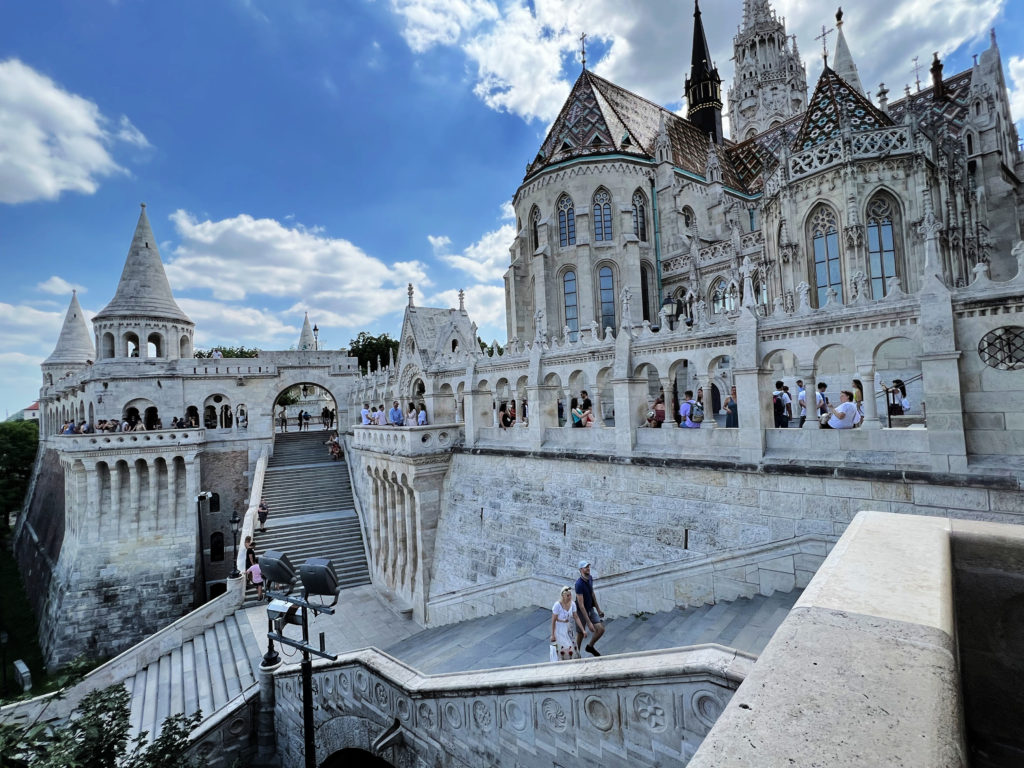
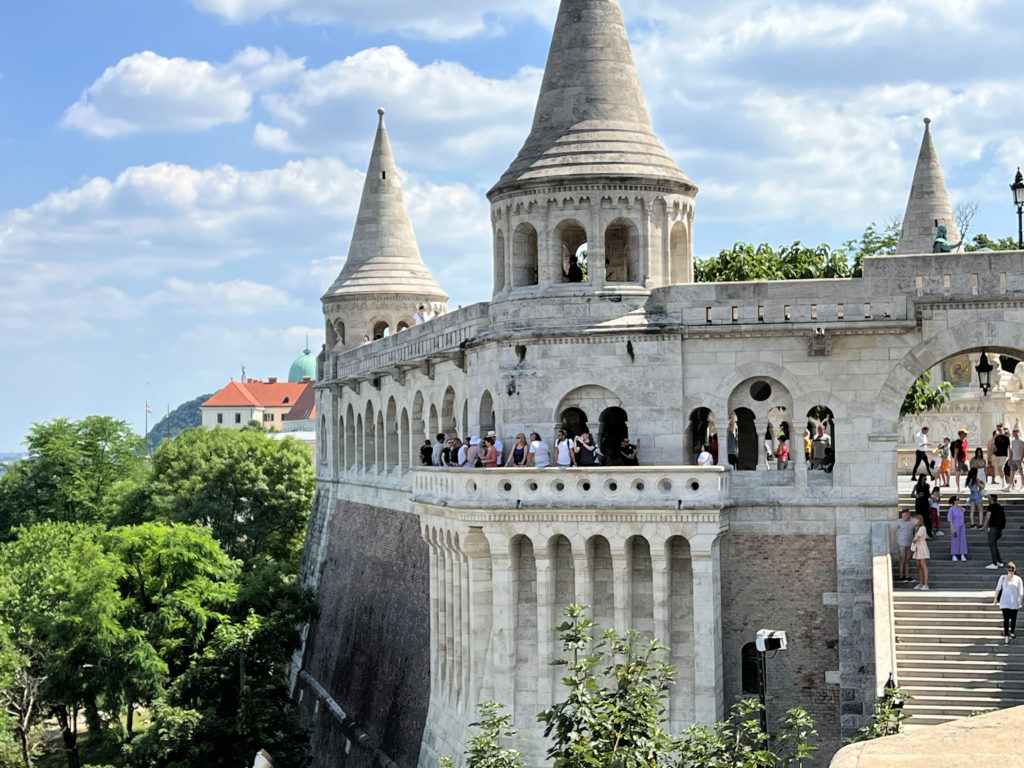
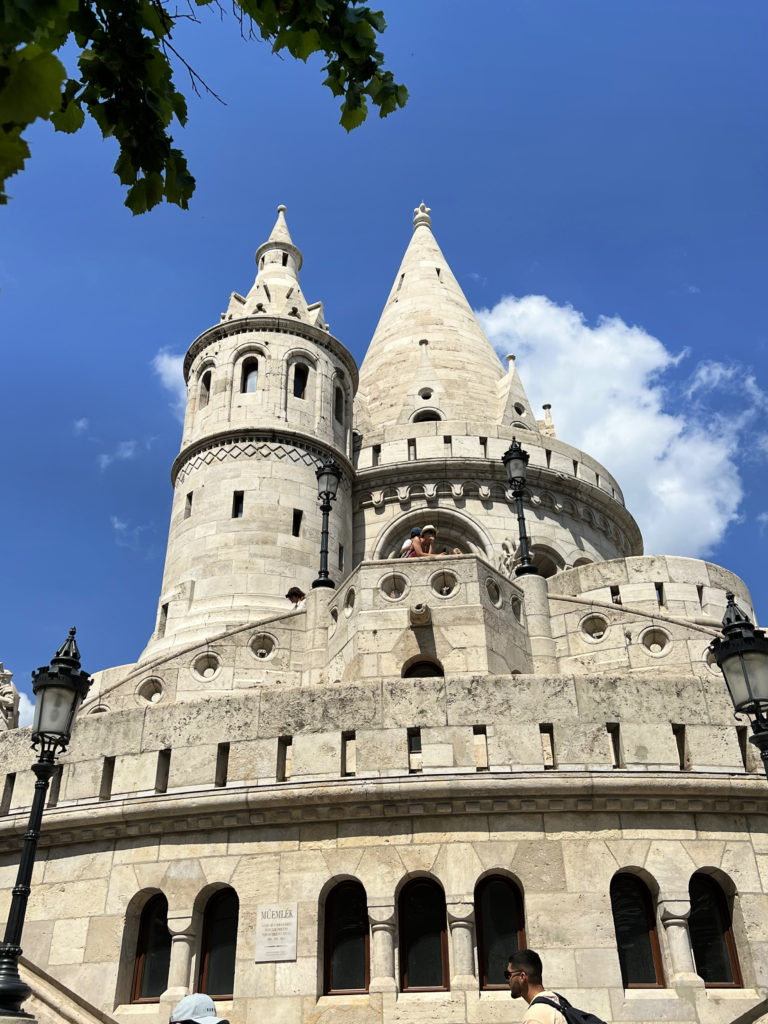

These are pictures we took at Fisherman’s Bastion. Pictured below is the Danube with St. Stephen’s Basilica in the background. This is the church we visited and went up into its tower for views of Budapest. Next is the Chain Bridge currently undergoing renovation. In the third picture, the Hungarian Parliament can be seen through the arched window followed by another (my favorite) of the Parliament.
